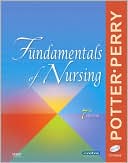CMSA Core Curriculum for Case Management
This text contains the core body of knowledge for case management practice as delineated by the Case Management Society of America (CMSA), the largest professional organization of case managers. The core curriculum provides a "synthesis of case management evolution," and presents essential elements, concepts, and vision for current and future case management practice. This edition is significantly expanded to reflect the dynamic changes taking place in case management. Each chapter is...
Search in google:
This text contains the core body of knowledge for case management practice as delineated by the Case Management Society of America (CMSA), the largest professional organization of case managers. The core curriculum provides a "synthesis of case management evolution," and presents essential elements, concepts, and vision for current and future case management practice. This edition is significantly expanded to reflect the dynamic changes taking place in case management. Each chapter is organized in a consistent format that includes learning objectives; introduction; important terms and concepts; key definitions; and references. Doody Review Services Reviewer:Roberta J. White, RN, BSN, BC(James A. Haley Veterans' Hospital)Description:This enjoyable resource updates the pertinent aspects of case management. This edition expands on the original 2001 publication by including new materials to enhance the heightened role of case management and providing safe protocols and practices.Purpose:The purpose is to synthesize case management evolution and to forecast its future. The authors do an impeccable job of meeting these worthy objectives by including current and applicable information.Audience:According to the authors, the book is written for case managers, their patients, and those directly or indirectly involved in case management. Since this book is written on a professional level, some terminology may be difficult for patients to understand without at least a twelfth grade education, but it can help them become aware of the numerous aspects of case management.Features:The book covers from basic to advanced concepts of case management, including preparing the reader for possible future or ongoing advances. Through the case manager, the patient is assisted with patient care, legal/ethical issues, and community resources to name a few. Also, the clear definitions at the beginning of each chapter and the informational charts and tables promote clarity when needed. In addition, the suggested readings at the end of each chapter are a nice touch.Assessment:Areas particularly well covered include the history and evolution of case management in chapter one and case management in the home care setting in chapter five. Both chapters accommodate a novice or an advanced practitioner, which brings me to the innovative quick-reference outline format. Reading this book is like reading notes from a class lecture or seminar. The up-to-date material justifies replacing the previous edition.
Section one Background and Overviewchapter 1 History and Evolution of Case Management chapter 2 Health Care Insurance, Benefits, and Reimbursement Systems chapter 3 Case Management Practice Settings and Throughput chapter 4 Case Management in the Acute Care Setting chapter 5 Case Management in the Home Care Setting chapter 6 Case Management in the Long-Term Care and Rehabilitation Settings chapter 7 Case Management in the Palliative Care and Hospice Settings Section two Roles and Functions of Case Managers chapter 8 The Case Manager chapter 9 The Case Management Process chapter 10 Transitional Planning chapter 11 Utilization Management and Resource Management chapter 12 Leadership Skills and Concepts chapter 13 Education, Training, and Certification of Case Managers Section three Case Management Tools chapter 14 Case Management Plans, Clinical Pathways, and Protocols chapter 15 Information Systems in Case Management chapter 16 Telehealth and Telemedicine in Case Management Section four Specialty Practices in Case Management chapter 17 Life Care Planning and Case Management chapter 18 Workers' Compensation Case Management chapter 19 Disability and Occupational Health Case Management chapter 20 Disease Management and Case Management chapter 21 Maternal-Child Case Management chapter 22 Geriatric Case Management chapter 23 Behavioral Health Case Management chapter 24 Complementary and Alternative Medicine Section five Effectiveness of Case Management chapter 25 Quality and Outcomes Management chapter 26 Legal Issues in Case Management Practice chapter 27 Ethical Issues in Case Management Practice
\ From The CriticsReviewer: Roberta J. White, RN, BSN, BC(James A. Haley Veterans' Hospital)\ Description: This enjoyable resource updates the pertinent aspects of case management. This edition expands on the original 2001 publication by including new materials to enhance the heightened role of case management and providing safe protocols and practices.\ Purpose: The purpose is to synthesize case management evolution and to forecast its future. The authors do an impeccable job of meeting these worthy objectives by including current and applicable information.\ Audience: According to the authors, the book is written for case managers, their patients, and those directly or indirectly involved in case management. Since this book is written on a professional level, some terminology may be difficult for patients to understand without at least a twelfth grade education, but it can help them become aware of the numerous aspects of case management.\ Features: The book covers from basic to advanced concepts of case management, including preparing the reader for possible future or ongoing advances. Through the case manager, the patient is assisted with patient care, legal/ethical issues, and community resources to name a few. Also, the clear definitions at the beginning of each chapter and the informational charts and tables promote clarity when needed. In addition, the suggested readings at the end of each chapter are a nice touch.\ Assessment: Areas particularly well covered include the history and evolution of case management in chapter one and case management in the home care setting in chapter five. Both chapters accommodate a novice or an advanced practitioner, which brings me to the innovative quick-reference outline format. Reading this book is like reading notes from a class lecture or seminar. The up-to-date material justifies replacing the previous edition.\ \








